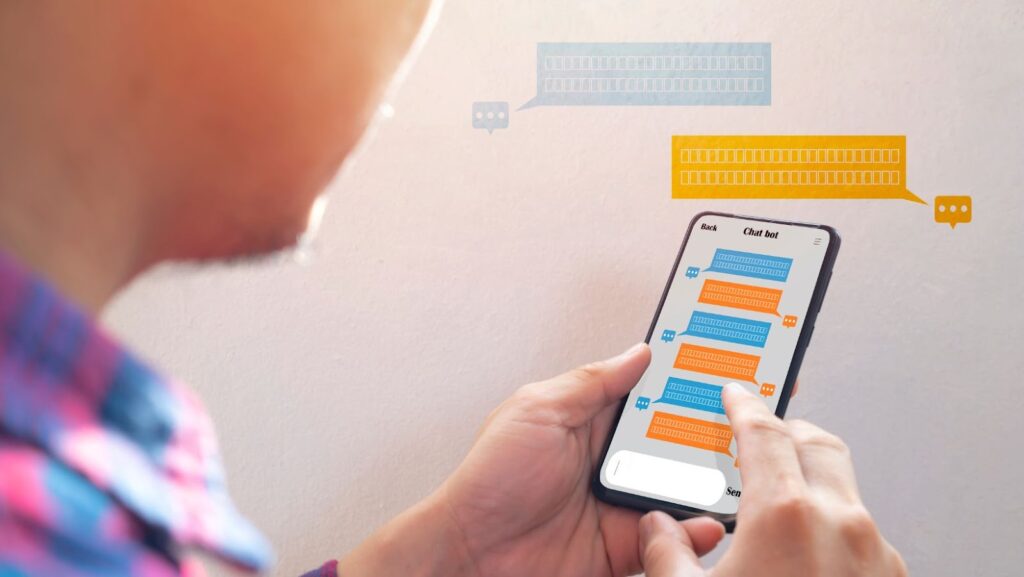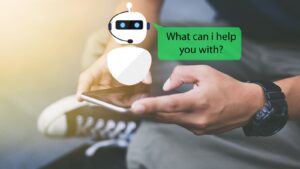Tips for Building a Successful Chatbot

Building a successful chatbot requires careful consideration and planning to ensure that it meets the needs of your target audience and provides a positive user experience. Here are some tips to help you build an effective chatbot:
1. Define your chatbot’s purpose: Determine the main objective of your chatbot and ensure that it aligns with the needs of your target audience.
2. Keep the conversation natural: Develop a chatbot that mimics natural conversation and uses language that your audience is familiar with.
3. Provide clear instructions: Make sure that your chatbot provides clear instructions and options to help users navigate through the conversation.
4. Test your chatbot: Test your chatbot to ensure that it’s functioning correctly and providing a satisfactory user experience.
5. Analyze user feedback: Analyze user feedback to identify areas of improvement and adjust your chatbot’s functionality to address user needs.
By following these tips, you can build a chatbot that effectively engages with your target audience and provides a positive user experience.
How to Build a Chatbot
Before you can create a successful chatbot, it’s important to understand the basics of chatbot development. This includes having an understanding of natural language processing, conversation design, and testing and launching your chatbot. By having a basic understanding of how chatbots work, you can create a chatbot that can help your business in a number of ways. Let’s explore the basics of chatbot development.
Define the Purpose and Goals of Your Chatbot
Defining the purpose and goals of your chatbot is a crucial step in building a successful chatbot. Before starting the development process, it is essential to have a clear understanding of why you are building a chatbot and what you hope to achieve with it. Here are some tips to help you define the purpose and goals of your chatbot:
- Identify the primary function of your chatbot, such as customer support or lead generation.
- Determine the target audience for your chatbot and their needs.
- Outline the specific tasks and activities that your chatbot will perform to achieve its purpose and goals.
- Set measurable objectives for your chatbot, such as increasing customer engagement or reducing response time.
- Continuously evaluate and adjust your chatbot’s purpose and goals based on feedback from users and performance metrics.
Determine Your Chatbot’s Target Audience
One of the most crucial steps in building a successful chatbot is to determine its target audience. The target audience will dictate the functionalities, tone, and content of the chatbot messages. Before developing a chatbot, you must identify the people or group of people that you’ll be serving. Here are some ways to determine your chatbot’s target audience:
1. Research your customers and their behaviors – knowing your customers’ goals, preferences, and pain points will help you create a chatbot that addresses their needs.
2. Create user personas – create fictional characters that represent your target audience.
3. Identify the platforms where they spend their time – integrated the chatbot feature into platforms where your target audience is already spending time.
Once you determine your chatbot’s target audience, you can craft messaging, personality, and conversation styles that resonate with your users.
Choose the Type of Chatbot You Need
Before diving into chatbot development, it’s important to choose the type of chatbot that best fits your goals and audience. Here are the main types of chatbots and their purposes:
1. Rule-Based Chatbots: These chatbots are based on predefined rules and respond to specific user inputs. They are best suited for simple and structured tasks, such as answering common FAQs, scheduling appointments, and providing basic customer support.
2. AI-Powered Chatbots: These chatbots use natural language processing (NLP) and machine learning algorithms to understand human language and provide personalized and context-driven responses. They are advanced chatbots, capable of handling complex queries, understanding the user’s intent, and adapting to new situations. AI-powered chatbots are ideal for industries such as healthcare, finance, and e-commerce.
3. Social Media Chatbots: These chatbots are designed to engage with customers on social media platforms like Facebook, Instagram, and Twitter. They can handle bookings, reservations, customer support, and offer personalized recommendations.
Once you know the type of chatbot that best fits your needs, you can start building a successful chatbot that provides value to your customers. While developing a chatbot, make sure to include fallback messages for when the bot is unable to understand the user’s query or provide a satisfactory response.
Plan Your Chatbot Development Process
Building a successful chatbot requires a well-constructed development plan. Taking the time to plan out your chatbot development process can make the difference between success and failure. This article will provide tips and techniques to help you define the development process for your chatbot. From defining the scope and objectives for the chatbot to understanding the technology behind it, this article will provide you with everything you need to know to create a successful chatbot.

Define the Chatbot’s User Journey and Conversation Flow
Defining the chatbot’s user journey and conversation flow is a crucial step in the process of building a successful chatbot. Here are some tips for creating a well-thought-out chatbot conversation flow:
1. Define the purpose and goal of your chatbot.
2. Identify your target audience and tailor the conversation to their needs and preferences.
3. Create a list of possible user inputs and map out the conversation flow based on these inputs. Make sure the flow is intuitive and easy to follow.
4. Incorporate natural language processing (NLP) and artificial intelligence (AI) technologies to enhance the chatbot’s ability to understand and respond to users.
5. Use feedback and analytics to continuously improve the chatbot’s conversation flow and user experience.
By taking the time to plan and refine your chatbot’s user journey and conversation flow, you can create a chatbot that effectively meets the needs of your target audience and delivers an enjoyable user experience.
Determine the Features and Functionalities Your Chatbot Needs
When planning to develop a chatbot, it is important to determine the features and functionalities based on your business needs and target audience. Here are some tips to help you build a successful chatbot:
– Start by defining the purpose of your chatbot and what you want it to accomplish.
– Identify your target audience and tailor the functionality of your chatbot to their needs and preferences.
– Determine the scope of your chatbot’s capabilities and design a conversation flow that is easy to use and efficient.
– Decide on the type of chatbot you want to build – rule-based or AI-powered – based on your business requirements and budget.
– Integrate essential features such as user authentication, error handling, and response logging to make your chatbot more reliable and secure.
Pro Tip: Keep your chatbot design simple, focus on delivering value to your customers, and iterate based on user feedback to continuously improve its functionality.
Choose the Right Tools and Platforms for Chatbot Development
Building a successful chatbot requires choosing the right tools and platforms for chatbot development. Here are some tips to plan your chatbot development process:
- Determine your chatbot’s purpose and define its scope before starting the development process.
- Choose a chatbot development platform that aligns with your technical expertise, resources, and budget.
- Consider using natural language processing (NLP) platforms and machine learning tools to improve your chatbot’s ability to recognize user intent and respond accurately.
- Test your chatbot frequently during the development process to ensure that it performs as expected and makes a positive impact on your users.
- Lastly, choose a reliable hosting provider to ensure that your chatbot runs smoothly without any downtime for maintenance or upgrades.
Design an Effective Chatbot Interface
Are you looking to build a successful chatbot? If so, then understanding how to design an effective chatbot interface is essential. There are certain aspects to consider including the user flow, user experience, and the overall usability of the chatbot. Building a chatbot with a great user interface will make it easier for users to interact with and ultimately, achieve their goals. In this article, we will be exploring the design elements that will help you create an effective chatbot interface.

Define the Chatbot’s Personality and Tone of Voice
The personality and tone of voice of your chatbot are critical components of a successful chatbot interface. Your chatbot’s personality should align with your brand and the goals of your chatbot, while its tone of voice should be appropriate for its intended audience and purpose. To define your chatbot’s personality, first, determine what aspects of your brand you want to emphasize in the chatbot. Consider variables like humor, helpfulness, and empathy, then craft a voice that is consistent with your brand and resonates with your target audience.
Your tone of voice should also match the purpose of your chatbot. If your chatbot is designed to solve customer service issues, for example, you may want a tone that is professional, concise, and solution-driven. On the other hand, if your chatbot is designed to be a personal assistant, you may want a tone that is friendly, empathetic, and conversational. Remember, the personality and tone of voice should be consistent across all interactions, including text and voice responses. With a well-defined personality and tone of voice, your chatbot becomes more human-like and engaging, leading to a more effective and successful chatbot interface.
Design the Visual and Textual Elements of Your Chatbot
Designing the visual and textual elements of your chatbot is crucial for building an effective and successful chatbot that users will engage with. Here are some tips for designing an effective chatbot interface:
1. Keep the design simple and user-friendly, with clear and concise language that matches the tone and voice of your brand.
2. Use buttons or quick replies for users to choose from to streamline the conversation and make it feel more natural.
3. Ensure that the chatbot is mobile-responsive, as more and more users are accessing chatbots through their mobile devices.
4. Incorporate images, videos or GIFs to break up the text and add a visually appealing element to the chatbot.
5. Test the chatbot interface with real users to ensure that it is working effectively and makes sense from a user perspective.
By keeping these tips in mind, you can create a chatbot interface that is easy to use, engaging, and effective at helping users achieve their goals.
Create a Seamless User Experience
Designing an effective chatbot interface is crucial for creating a seamless user experience. To make the chatbot experience easy and friendly, here are some tips you can follow:
- Keep the chatbot design simple and user-friendly. Use natural language and easy-to-understand prompts.
- Include clear and concise directions to guide the user through the chatbot experience.
- Personalize the chatbot experience by providing customized suggestions and responses based on the user’s interaction history.
- Incorporate visual elements like images and videos to break up the monotony of text-based interactions.
- Test and analyze the chatbot’s performance regularly to make improvements and identify areas of weakness.
- Keep the design and user experience consistent across all platforms where the chatbot will be available.
Train Your Chatbot to Improve its Performance
Building a chatbot that is successful and meets your expectations is no easy task. Chatbots rely on Artificial Intelligence (AI) to understand user inputs and respond accordingly. Training your chatbot is an essential step to ensure it responds accurately and quickly to user inquiries. In this article, we will discuss the different ways of training a chatbot to boost its performance.
Collect and Analyze Data from User Interactions
Collecting and analyzing data from user interactions is crucial for training your chatbot to improve its performance. Here are some tips to help you build a successful chatbot:
1. Use an analytics tool to track user behavior, including the questions users ask, the responses they receive, and the actions they take.
2. Analyze the data to identify patterns and trends in user behavior, and use this information to improve your chatbot’s responses and functionality.
3. Develop a system to collect user feedback and use it to make updates and improvements to your chatbot.
4. Regularly test your chatbot’s performance and make adjustments as needed to ensure that it is meeting user needs and providing optimal service.
By collecting and analyzing user data, you can train your chatbot to improve its performance and provide an excellent user experience.
Use Natural Language Processing (NLP) to Train Your Chatbot
Chatbots have become an essential part of modern businesses, and training them with Natural Language Processing (NLP) can take their performance to the next level. NLP is a tool that allows chatbots to interpret and understand human language better. It enables chatbots to recognize customer intent and return accurate responses.
Tips for building a successful chatbot using NLP include:
1. Designing a conversational flow that is intuitive and easy to use.
2. Providing clear prompts for the chatbot to follow.
3. Developing language models that can recognize and interpret intent.
4. Regularly updating the chatbot with new data to improve its performance.
5. Testing and fine-tuning the chatbot for accuracy and efficiency.
By using NLP to train your chatbot, you can enhance its performance and provide better customer service, ultimately improving your business’s overall efficiency and productivity.
Continuously Improve Your Chatbot’s Performance Based On User Feedback
To build a successful chatbot, it is crucial to train it to improve its performance, and user feedback is integral in this process. Here are some tips to help you continuously improve your chatbot’s performance based on user feedback:
- Analyze user conversations – Look for patterns and areas where users struggle to converse with your chatbot, then identify how your chatbot can improve upon these areas.
- Refine Your Responses – Test different variations of responses to improve your bot’s conversational skills.
- Be proactive – Chatbots are designed to solve problems, but there are often user feedback and communication issues that go unnoticed. Addressing these issues in advance can prevent negative feedback and aid in improving the bot’s overall performance.
- Insights From Analytics – Use analytics to help track and monitor user behavior and determine which interactions lead to successful conversations with your chatbot.
In summary, effective use of user feedback and analytical data are essential tools for improving the performance of your chatbot. Keep refining your chatbot’s skillset, conversational abilities, and overall user experience to achieve the best results.
Launch and Promote Your Chatbot
Once you have created your chatbot and tested it extensively for accuracy and customer experience, it’s time to launch it. Many people think that when the chatbot is ready, it will start working on it’s own. But this is not the case. You will need to promote it and make sure the right people start using it. In this article, we’ll discuss how you can launch and promote your chatbot.
Test Your Chatbot and Fix Any Issues
Testing your chatbot is a crucial step to ensure its success and effectiveness in assisting your website visitors. Here are some steps to follow to test and fix any issues with your chatbot:
- Test the chatbot using various test scenarios to identify any potential bugs and glitches.
- Review the conversation flow and check if it aligns with the intended user experience.
- Check if the chatbot answers are relevant and helpful to the questions being asked by the visitors.
- Ensure the chatbot is accessible on all devices and browsers to improve user experience.
- Analyze the chatbot metrics to measure its performance and identify areas of improvement.
- Use feedback from the visitors to improve the chatbot’s performance.
- Fix all issues promptly to ensure that the chatbot is effective in assisting visitors to your website.
Launch Your Chatbot on the Right Platforms
Launching your chatbot on the right platforms is crucial to its success. Here are some tips for building a successful chatbot and promoting it on the right channels:
1. Determine your target audience and the channels they use: Knowing your audience is key to understanding which platforms your chatbot should be on. If your target audience is primarily on Facebook, then creating a Facebook Messenger chatbot would be the best option.
2. Promote your chatbot on your website and social media channels: Make sure to promote your chatbot on every channel possible. Add “Chat with us” buttons on your website and social media pages, and share direct links to your chatbot.
3. Utilize paid advertising: Use paid advertising to promote your chatbot on the platforms that your target audience is most active on.
4. Continuously evaluate and optimize your chatbot’s performance: Monitor your chatbot’s performance and make changes as needed to improve its effectiveness and engagement.
By launching your chatbot on the right platforms and promoting it effectively, you can maximize its reach and impact.
Promote and Market Your Chatbot Effectively
Launching a chatbot requires not only technical expertise but also effective promotion and marketing strategies to ensure its success among users. Here are some tips for promoting and marketing your chatbot effectively:
1. Determine your target audience and create a marketing persona to guide your promotional efforts.
2. Share your chatbot on social media platforms and other relevant online communities to increase its visibility.
3. Create a website or landing page for your chatbot to provide users with more information and the opportunity to engage with it.
4. Use paid advertising channels, such as paid search and social media ads, to drive traffic to your chatbot and increase user engagement.
5. Offer incentives or rewards to users who engage with your chatbot, such as exclusive content or discounts, to encourage continued use and word-of-mouth promotion.
By following these tips, you can effectively launch and promote your chatbot to increase its visibility, engagement, and overall success. Pro Tip: Continuously monitor user feedback and engagement metrics to make necessary tweaks and improvements to your chatbot.






